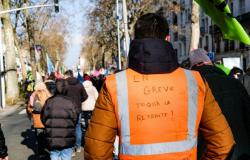A favorite from our collaborator Jean Loh.
Xu Yong is one of the rare Chinese photographers for whom I have the greatest admiration, for the simple reason that he seems to me to be the only one to work on the passage of “time” and on the preservation of “memory” collective. In a society which has formalized a constant policy of amnesia, through the censorship of the teachings of history, in particular of certain fundamental chapters of the contemporary history of the country, and by obliterating any publication of these episodes in books, the newspapers, magazines and on social networks, we cannot miss Xu Yong’s work.
This new edition of his book “Portraits of 101 Hutongs” embodies the nostalgia for a long-lost old Beijing and the erased memory of history and people. Even if technically the photographer’s modus operandi can be approximated to Hiroshi Sugimoto’s “Theaters”, however one sits in the darkness inside a closed space, the other stands in broad daylight in the Street. If Xu Yong’s initial goal, by using a very long exposure time with a small aperture on his camera fixed on a tripod, was to avoid letting the incessant passage of bicycles and the crowd of curious people who came to see him work in the narrow streets of the Hutongs, the end result reveals all the details of the architecture of the Hutongs, but at the same time the damage of past time and the scars of the cultural revolution. This absence of human figures leads us to reflect on the frightening practice which consists of denying the individual for the benefit of the collective.
The following text is edited from an interview with Xu Yong.
At the age of 11, Xu Yong followed his parents to Beijing. They actually lived in the courtyard of the dormitory of the Academy of Social Sciences in Dongsi Toutiao (*a famous Hutong district). It was a hutong complex dating back to the Qing Dynasty consisting of several courtyards and gardens. Right in front of their house there was a garden planted with apple trees, pear trees, vine trellises, with paved paths. The landscape changed colors with the seasons. This is what the Hutongs of Beijing looked like before the Cultural Revolution, which caused terrible damage to the history and culture of the Hutongs.
The idea to photograph the Hutongs arose when Xu Yong (who worked for an advertising agency) was filming a documentary for American television on the former residences of two of China’s most famous painters, Qi Baishi and Xu Beihong. He became aware of the architectural and historical subtleties of the Hutongs which made it possible to distinguish the social ranks of the inhabitants. The serious incident that occurred in Tiananmen Square in 1989, which he also photographed, led to a virtual cessation of activities and imposed a sudden calm on life in Beijing. At that time, he said, the entire city was still shrouded in the shadow of the Tiananmen incident, people had not recovered from their shock and sadness. As a result, the shots and layout of the book are colored by his own emotions immediately after the Tiananmen incident. Even if the whole reflects the Hutongs before their radical urban modernization. Because, after the Cultural Revolution, more than 90% of Beijing’s square courtyards were transformed into large courtyards where several or even a dozen families lived. Above all, uncontrolled construction has caused many courtyards to lose their original appearance.
In 1990, Xu Yong published a book of his photos of the Hutongs which immediately attracted the attention of photographers and artists, and the versions were made into postcards and calendars, etc. also became bestsellers. Beijing expatriates began inviting Xu Yong to host home screening parties. This ended with guided Tours of the Hutongs, first on foot and then in the form of platoons of tricycles with red tarpaulins organized by Xu Yong in the famous “Hutong Tours” which took one hundred and thirty thousand foreign tourists.
Xu Yong initially photographed his Hutongs in classic Linhof 4×5 medium format, but it took too long to change the negatives and attracted too many curious people. Taking advantage of Kodak’s launch of TMAX 100 ASA film on the Chinese market, Xu Yong switched to 24×36 with a Japanese Contax camera on a tripod and a standard 28mm lens, with a small aperture. To prevent people or passing bicycles from being captured in the photo, he uses a dark gray filter for a long exposure, so pedestrians and passing vehicles do not leave marks on the photos. With the exception of the last photo in the book which brought together three generations of residents, the 100 photos of Hutongs have deliberately avoided the slightest human figure. Thus this book retains its singularity and leaves more space for the imagination of the Hutongs.
This time, the Berlin publisher Kerber Verlag is releasing the ninth edition of “101 Portraits of Hutong”, and it is also the first time that this book has been published in Europe.
Notes :
(1*) The term Hutong (in Chinese: 胡同) applies to a small urban district made up of passages and narrow streets in Beijing. A Hutong is a set of streets comprising numerous siheyuan (square courtyards) with dwellings grouped around a courtyard.
(*2) Dongsi Toutiao东四头条 is a Hutong in the vicinity of the former Ministry of Foreign Affairs of Beijing, Dongsi is a historic district which dates back to the Yuan Dynasty, some Hutongs of which still exist today.
(*3) This text is formatted from a long interview with photographer Xu Yong. The photos are provided free of charge by their author.





